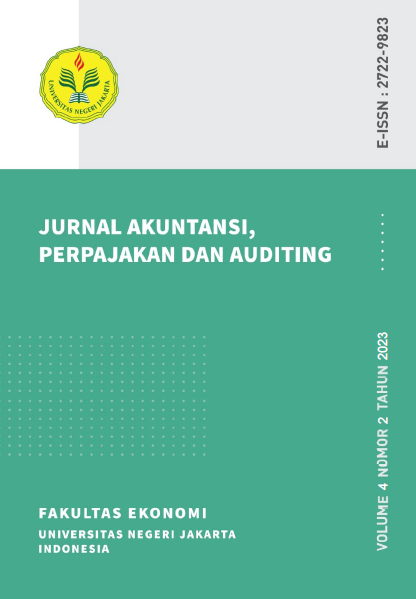Pengaruh Akuntabilitas Keuangan dan Pengendalian Internal di Gereja HKBP Jatiasih terhadap Pencapaian Program Kerja Pelayanan
DOI:
https://doi.org/10.21009/japa.0402.03Keywords:
Internal Control, Financial Accountability, Service Work Program AchievementAbstract
This study aims to obtain the results of the influence of financial accountability and internal control on the achievement of service work programs at the HKBP Jatiasih church. The data source used is the primary data source in the form of an online form (google form) which is distributed to the HKBP Jatiasih church congregation. The sampling method was carried out with a random sample of 195 respondents which was obtained based on the sample limit on the Slvoin calculation. The data analysis method used is descriptive statistics, validity test, classic assumption test, multiple linear analysis, and hypothesis testing. The following are research results, namely: a) Financial accountability has a significant influence on the achievement of service work programs; b) Internal control has a significant positive influence on the achievement of service work programs.
References
Asmardika, R. (2018,Maret24). Curi Dana Gereja sebesar Rp8 miliar, uskup dan Pastur di Brasil diciduk Polisi. Diakses dari https://news.okezone.com pada 25 Januari 2023
Dolle, B. P. (2018). Prinsip Akuntabilitas dan Pengelolaan Keuangan Paroki: Studi Etnografi Inkulturatif pada Gereja Katolik Lokal di Larantuka. Yogyakarta: Unpublished Manuscript, Universitas AtmaJaya.
Ghozali, I. (2013). Aplikasi Analisis Multivarite dengan SPSS Edisi Keempat. Semarang: Badan Penerbit Universitas Diponegoro.
Mardiasmo. (2009). Akuntansi Sektor Publik. Yogyakarta: Penerbit Andi.
Mc Carthy, J. H. (2012). Financial and Accounting Guide for Not - For -Profit Organizations 8th Edition. New Jersey: John Wiley & Sons, Inc. Naipospos, H. (2019, Juli2). Akhirnya Kericuhan di HKBP Kayu Tinggi antara Pendeta dengan Jemaat Berujung Pelaporan ke Polisi. Diakses dari https://medan.tribunnews.com pada 25 Januari 2023
Oti, P. A. (2016). Framework of Church Accounting in Nigeria: Pragmatic Examination of the Problems, Prospects, and Financial Implications of Proliferation of Churches. Journal of Marketing and Consumer Research, 27, 7-21.
Protestan, H. K. (2020). Almanak HKBP. Pematang Siantar: Percetakan HKBP.
Radianto, W. E.(2010). Peran Informasi Akuntansi dalam Keuangan Gereja. Jurnal Riset Akuntansi dan Keuangan, 6 (1), 77 - 86.
Rixon, D. R. (2014). The Seven Deadly Sins of Church Accounting. Journal of Business Diversity,14 (1), 9 - 17.
Sarosa, S. (2017). Penelitian Kualitatif Dasar - Dasar Edisi Kedua. Jakarta: PT Indeks.
Silvia, J. A. (2011). Akuntabilitas dalam Perspektif Gereja Protestan: Studi Fenomenologis pada Gereja Protestan Indonesia Donggala Jemaat Manunggal Palu. Jurnal Simposium Nasional Akuntansi.
Su, E. (2015,November20) . City Harvest Church Founder Kong Hee and His Wife Sun Ho Arrive at the State Courts in Singapore. Diakses dari https://abc.net.au pada 25 Januari 2023
Sugiyono. (2015). Metode Penelitian Kombinasi. Bandung: Alfabeta.
Sukmawati, F. P. (2016). Akuntabilitas Gereja dalam Perspektif Alkitabiah dan Stewardship Theory: Studi Kasus pada Gereja. Jurnal Akuntansi Aktual, 3 (4), 301- 310.
Wibowo, E. A. (2017). Korupsi dalam Pelayanan Gereja: Analisis Potensi Penyimpangan dan Pengendalian Internal, 3 (2).Integritas Jurnal AntiKorupsi, 105 - 136.
Wicaksono, K. W. (2015). Akuntabilitas Organisasi Sektor Publik. Jurnal Kebijakan & Administrasi Publik,19 (1), 3 - 12.






